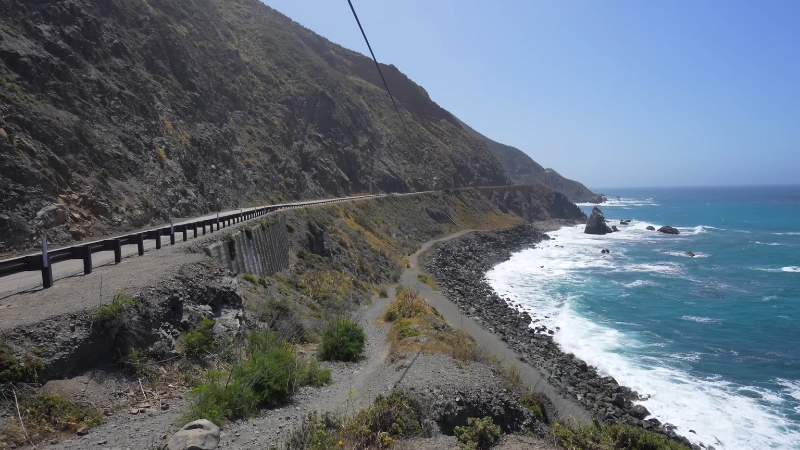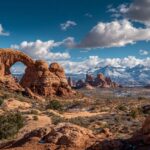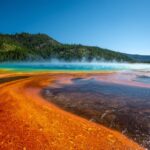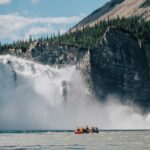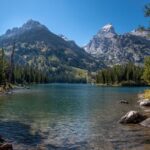If you want a road trip where every stop is iconic, unforgettable, and packed with real adventure, the American West delivers like nowhere else.
The region’s national parks, coastlines, and cities are not just famous names—they’re places where the landscapes surprise you, the food is worth the drive, and every mile brings a new kind of scenery.
In 2025, these ten destinations—each with its atmosphere, best times to visit, and travel quirks will be proven road trip highlights. You’ll find everything from ocean cliffs and city hills to red rock canyons, deep-blue lakes, and forests of ancient giants.
This list gives you the facts, the practical advice, and what to expect on the ground—so you can plan stops that are worth your time and skip the guesswork.
Whether you’re chasing views, hikes, new flavors, or just the freedom of the open road, this is where you want to be.
1. Big Sur, California
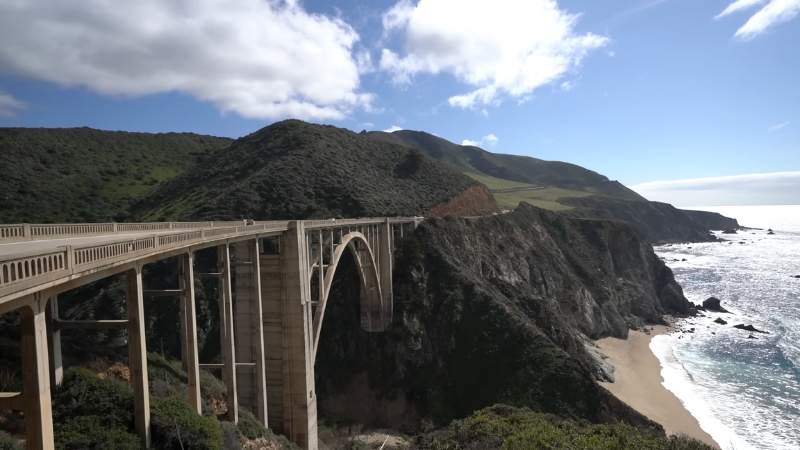
Aspect
Details
Route
Highway 1, Monterey to San Simeon, 90 miles of rugged coastline
Highlights
Bixby Bridge, McWay Falls, Pfeiffer Beach, Garrapata State Park
Food & Lodging
Roadside cafés, Nepenthe for ocean views, Big Sur Bakery, rustic cabins, and campsites
Activities
Scenic drives, hiking, photography, whale watching (Jan–Apr, July–Oct)
Practical Tips
Gas up before entering, cell service is limited, bring snacks/water, check for landslide closures
Big Sur isn’t just a road—it’s an experience of cliffs, mist, and the constant thunder of surf below. The drive itself is the main event, with hairpin turns revealing new postcard views around every bend. Stop for a photo at Bixby Bridge, then detour for a short hike to McWay Falls—an iconic waterfall dropping straight to a turquoise cove.
This is not the place for luxury; it’s about rustic cabins, campgrounds under redwoods, and the sound of the ocean through your open window. Food is simple but satisfying, often with a view that rivals the menu. In summer and fall, migrating whales can be spotted offshore, while spring brings wildflowers along the cliffs.
Cell phone service is patchy to nonexistent, so download maps and playlists before you arrive. Expect traffic and slow speeds, especially on weekends and holidays, but the scenery is worth every minute.
2. Yosemite National Park, California
Aspect
Details
Main Attractions
Yosemite Valley, El Capitan, Half Dome, Yosemite Falls, Glacier Point, Mariposa Grove of Sequoias
Entry
Reservation required (especially spring-fall); $35/vehicle
Lodging
Campgrounds, Curry Village tents, historic Ahwahnee Hotel, booking essential
Activities
Hiking, climbing, waterfall views, photography, ranger programs, stargazing
Best Times
Spring for waterfalls, fall for color, winter for snowshoeing, and tranquility
Yosemite is awe-inspiring and never just a quick stop. Even from the valley floor, you’re surrounded by cliffs that seem impossible, with waterfalls pouring hundreds of feet after spring snowmelt. Glacier Point delivers the valley’s best panorama, and the Mist Trail up to Vernal and Nevada Falls is a must for hikers ready to get wet and tired.
The Mariposa Grove of giant sequoias gives you a sense of the ancient forest California once was. Climbing history lives here, and you might spot climbers on El Capitan through binoculars.
Accommodations book out fast—plan at least six months ahead if you want a room or a campsite. Bears are real, so food storage rules are strict. Each season transforms the park: spring is lush and roaring, fall is crisp and golden, winter is quiet with snow dusting the granite. Cell service is very limited—unplug and enjoy it.
3. Lake Tahoe, California/Nevada
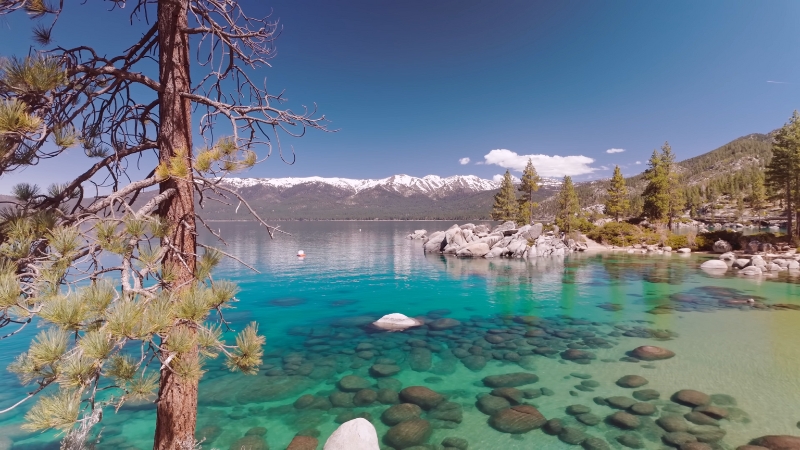
Aspect
Details
Geography
Straddles CA/NV border; north for ski resorts, south for casinos and nightlife
Activities
Boating, kayaking, swimming (summer), skiing and snowboarding (winter), mountain biking
Top Sights
Emerald Bay, Sand Harbor, Tahoe Rim Trail, Heavenly Gondola
Lodging
Cabins, hotels, resorts, and lakeside campgrounds; book in advance for peak season
Tips
Weekdays are quieter, water is cold year-round, and summer parking fills up early
Lake Tahoe’s water is bluer and colder than you can imagine until you jump in. In summer, paddleboarders dot the coves around Emerald Bay and kayakers paddle along rock outcrops.
In winter, the ski slopes at Heavenly and Northstar draw crowds from across the region. The surrounding pine forests are laced with hiking and biking trails; the Rim Trail offers endless views and frequent wildlife sightings.
The Nevada side is known for casinos and nightlife, while the California side is more family-friendly. Traffic around the lake can be slow on summer weekends, and parking at beaches fills up before noon—go early.
The lake never truly warms up, so a quick dip is a badge of honor. Shoulder seasons (spring and fall) are quieter, but the weather can be unpredictable. Lodging is diverse, from high-end resorts to rustic campgrounds.
4. San Francisco, California
View this post on Instagram
Aspect
Details
Landmarks
Golden Gate Bridge, Alcatraz, Painted Ladies, Fisherman’s Wharf, Palace of Fine Arts
Food Highlights
Sourdough bread, Mission burritos, Dungeness crab, Italian in North Beach, world-class coffee shops
Transport
Cable cars, MUNI buses, ferries, walking, biking across the Golden Gate Bridge
Neighborhoods
Chinatown, Haight-Ashbury, Castro, Mission District, North Beach
Scenic Options
Baker Beach, Twin Peaks, Land’s End Trail, Ferry Building market
Weather
Foggy mornings, breezy afternoons, mild year-round—bring layers even in July
Parking & Stay
Parking is scarce and expensive—public transit is easier. To save, try to find a room in San Francisco and split costs with a friend or via short-term rental sites
San Francisco feels like a collection of villages pressed together by hills and the sea. Its neighborhoods each have their pulse: Chinatown is filled with markets and dim sum joints, North Beach gives you classic Italian pastry and coffee, the Mission offers murals and legendary burritos, while Haight-Ashbury keeps the city’s hippie roots alive.
Riding a cable car, you’ll bounce from the bustle of Union Square to the salty air of Fisherman’s Wharf in just minutes. Walking or biking across the Golden Gate Bridge is the city’s signature activity—views of the Pacific and city skyline are simply unbeatable, especially in the soft morning fog.
Alcatraz isn’t just a tourist trap; the audio tour is immersive, and the island’s views back toward San Francisco are hauntingly beautiful.
There are many short-term rental options and hostels you can try. But if you’re planning to extend your stay and you’re looking for something more long-term, consider room renting.
Sharing and trying to find a room in San Francisco can make the city much more affordable and let you experience more than just the main tourist hubs.
The city is famously walkable but also hilly—expect to break a sweat. Plan for microclimates: A sunny afternoon in Dolores Park can turn chilly when fog rolls in at sunset.
5. Zion National Park, Utah
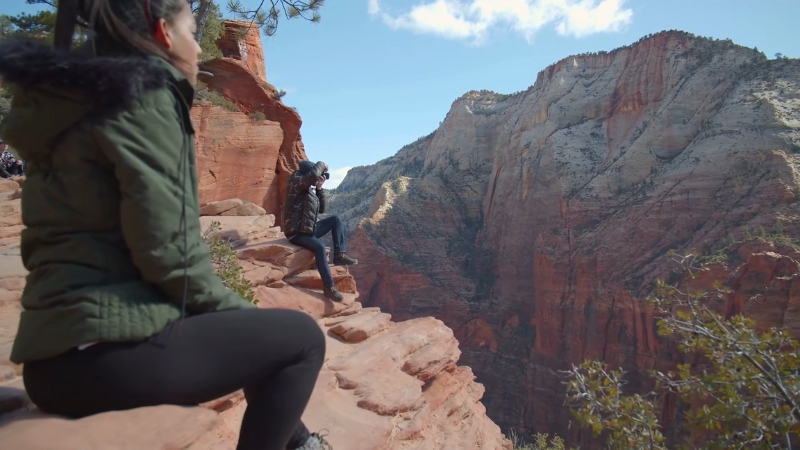
Aspect
Details
Main Sights
Zion Canyon, Angels Landing, The Narrows, Emerald Pools, Observation Point
Entry
Park shuttle system required for main canyon (March–Nov); $35/vehicle
Activities
Iconic hikes (permit required for Angels Landing), river wading in The Narrows, canyoneering
Lodging
Springdale motels and inns, park campgrounds, booking recommended
Advice
Start hikes early to avoid crowds/heat, and bring water shoes for The Narrows
Zion is a vertical world of red rock, where sunlight bounces off canyon walls and makes even seasoned hikers stare in disbelief. The hike up Angels Landing is legendary—and a true test of nerves, requiring a permit and a good head for heights.
The Narrows lets you walk right up the Virgin River, splashing between towering canyon walls (bring shoes that can get wet and a walking stick).
The park shuttle is mandatory much of the year and makes getting around easy, but lines can be long at peak times. Springdale, just outside the entrance, has plenty of hotels and restaurants, but they book up fast.
The air in Zion is dry, the sun is intense, and rain can bring flash floods—check forecasts and drink more water than you think you’ll need. Nights are peaceful, with a sky full of stars and the sound of the river echoing through the canyon.
6. Bryce Canyon National Park, Utah
@buslife4me Bryce Canyon National Park was out of this world 🪐❄️😍 . . . #brycecanyonnationalpark #nationalpark #naturelover #adventuretravel #travelbucketlist #traveltok #travellife #nomad #buslife #skoolie #vanlife #hiketok #hikingtiktok #getoutside ♬ Western Music: Arizona Dreaming – Piero Piccioni
Aspect
Details
Unique Features
Hoodoos (towering red rock spires), amphitheater overlooks, Queen’s Garden, and Navajo Loop trails
Best Views
Sunrise Point, Sunset Point, Bryce Point
Nightlife
Dark sky park—stargazing is a top attraction
Lodging
Bryce Canyon City hotels/motels, park lodge, campgrounds
Weather
Hot days, cool nights; bring layers
Bryce Canyon is more compact than many parks but packs a visual punch. The amphitheater is filled with orange, pink, and cream spires called hoodoos that catch the light at sunrise and sunset in ways that almost seem unreal.
The Queen’s Garden and Navajo Loop trails let you wander among the hoodoos and into cool pine forests below the rim. Evenings are for stargazing: the high elevation and lack of city lights make Bryce one of the darkest places in the U.S., where the Milky Way arches clear across the sky.
Lodging in the nearby town is convenient but limited, so plan for summer weekends.
Elevation here means thinner air—hikes feel a bit tougher, but the reward is silence and scenery unlike anywhere else.
7. Monument Valley, Arizona/Utah
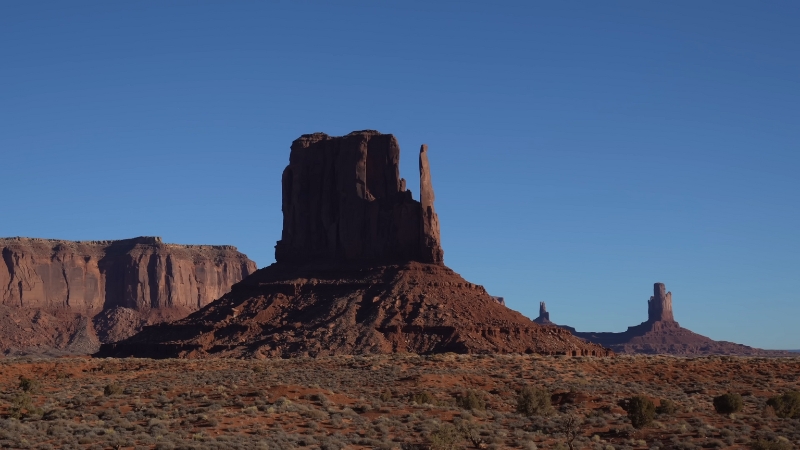
Aspect
Details
Scenery
Iconic red sandstone mesas and buttes, panoramic desert vistas
Activities
17-mile scenic drive (permit required), Navajo-guided jeep tours, sunrise/sunset photography
Cultural Insights
Navajo Nation reservation; local crafts and cultural programs available
Lodging
The View Hotel (inside the valley), Goulding’s Lodge, and limited camping
Advice
Best photos at sunrise/sunset, summer is hot and dry, check road conditions
Monument Valley feels almost mythic, with red monoliths rising from the desert floor, familiar from Western movies and car commercials. The 17-mile loop drive is mostly dirt and can be rough; guided Navajo tours are worth it for cultural context and access to restricted areas.
The sunrise and sunset light transform the buttes into glowing red-orange giants, making early mornings and late evenings the best times for photography.
Accommodations are basic but memorable—The View Hotel offers every room a direct look out over the valley. This is a true desert, so bring plenty of water and prepare for midday heat.
The land is part of the Navajo Nation, and local guides share stories and traditions that make the landscape feel alive with meaning. Stargazing here is incredible, with vast, unobstructed skies overhead.
8. Grand Canyon National Park, Arizona
Whether it’s your 1st or 10th visit, Grand Canyon National Park will amaze you!
Available Visitor Services this weekend: https://t.co/P9gi3nEJdz (63367)
Schedule of today’s programs and events: https://t.co/yQaiYilRyP (1910)
The Grand Canyon overwhelms our senses through its… pic.twitter.com/81yP0DPgRF
— Grand Canyon NPS (@GrandCanyonNPS) October 4, 2024
Aspect
Details
Best Views
South Rim overlooks, Mather Point, Yavapai Point, Desert View
Activities
Rim hikes, short descents below the rim, mule rides, river rafting (permits needed)
Entry
$35/vehicle; plan for lines at entrance and shuttles in peak season
Lodging
South Rim lodges (book early), nearby Tusayan hotels, and campgrounds
Advice
Summer crowds are huge, North Rim is less crowded (open May–Oct)
The Grand Canyon’s sheer scale is overwhelming—no photo prepares you for your first look over the edge. Most visitors stick to the South Rim, where multiple overlooks provide slightly different perspectives on the canyon’s shifting colors throughout the day.
Serious hikers might try the Bright Angel or South Kaibab trails, but even a short walk below the rim gives you a sense of the canyon’s depth and silence. Mule rides and river trips must be booked months in advance, but even just picnicking at sunrise or sunset is magical.
The North Rim offers a quieter, greener experience but is open only part of the year due to snow.
Lodging inside the park fills up nearly a year ahead for peak dates, so book as early as possible. Daytrippers should plan for long lines at park gates and shuttle stops during summer.
9. Moab, Utah (Arches & Canyonlands National Parks)
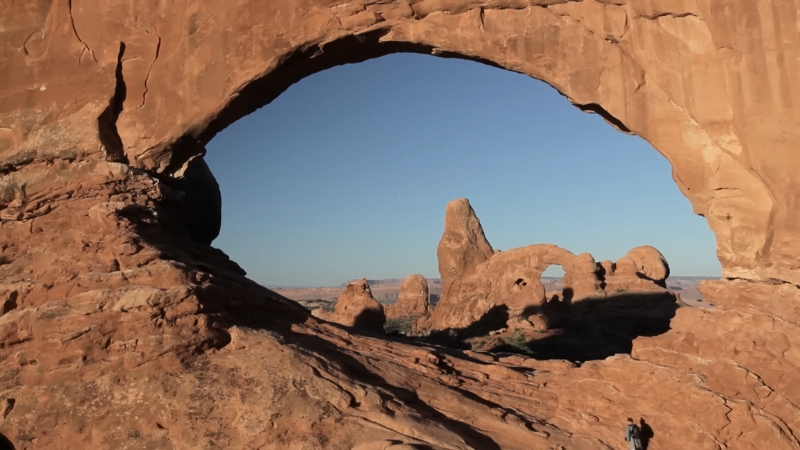
Aspect
Details
Sights
Arches National Park, Canyonlands National Park, Delicate Arch, Mesa Arch, Colorado River
Activities
Hiking, mountain biking, canyoneering, rafting, and off-road jeep tours
Lodging
Moab hotels, campgrounds, glamping yurts; book early in spring/fall
Town Life
Laid-back, outdoorsy vibe, breweries and food trucks, gear rental shops
Seasons
Spring and fall are best for hiking and biking, and summer is hot
Moab is a playground for anyone who loves the outdoors. Just outside town, Arches National Park is home to more than 2,000 natural stone arches, best explored in the golden light of early morning or late afternoon.
Canyonlands offers broader vistas and deeper solitude, with mesa-top overlooks and trails down into labyrinthine canyons. The Slickrock Trail is famous among mountain bikers worldwide, and local guides can take you deep into canyons or on the Colorado River.
The town of Moab itself is all about the outdoors: cafés, breweries, and gear shops fill the main drag, and evenings buzz with the stories of that day’s adventures. Accommodations range from campgrounds to boutique motels and glamping yurts. Spring and fall offer the best conditions, with warm days, cool nights, and fewer crowds.
10. Crater Lake National Park, Oregon
Aspect
Details
Main Features
The deepest lake in the U.S. (1,943 feet), with brilliant blue water, a volcanic caldera
Top Activities
Rim Drive (33-mile scenic loop), boat tour to Wizard Island, hiking, photography
Best Season
July–September (many roads snowed in until late June)
Lodging
Park lodge, Mazama Village cabins/camping, hotels in Klamath Falls/Medford
Practical Tips
The weather is unpredictable, pack layers, bring sunscreen, and gas up before entering the park
Crater Lake is a place where blue means something different—it’s so deep and pure it almost glows. The Rim Drive offers constantly changing perspectives on the lake, each with pullouts and short trails to panoramic viewpoints.
In summer, boat tours visit Wizard Island, where you can hike up a cinder cone inside the caldera itself. Snow lingers well into early summer, and roads may be closed even in June, so check conditions before your trip.
The park is less crowded than many national parks, but services are limited—fuel up before you arrive and pack snacks for your day’s explorations. Lodging in the park is basic but comfortable, with camping available for those who want to watch the stars reflect in the lake after dark.
Weather can shift quickly, with cool breezes even on the sunniest days.
Hello, my name is Harper Barton. The only thing I love more than travelling is writing about it. Sounds strange doesn’t it? But yeah, I adore writing and sharing my experiences about what I have experienced during my travels. Since I am a person who loves being a part of the community, I often write about local festivals with the goal of popularizing outside just small communities they come from.

